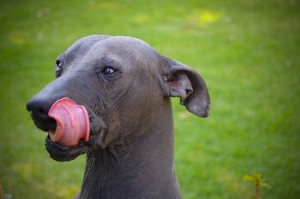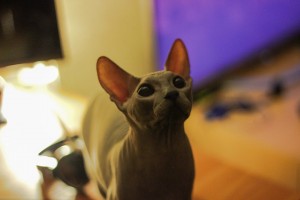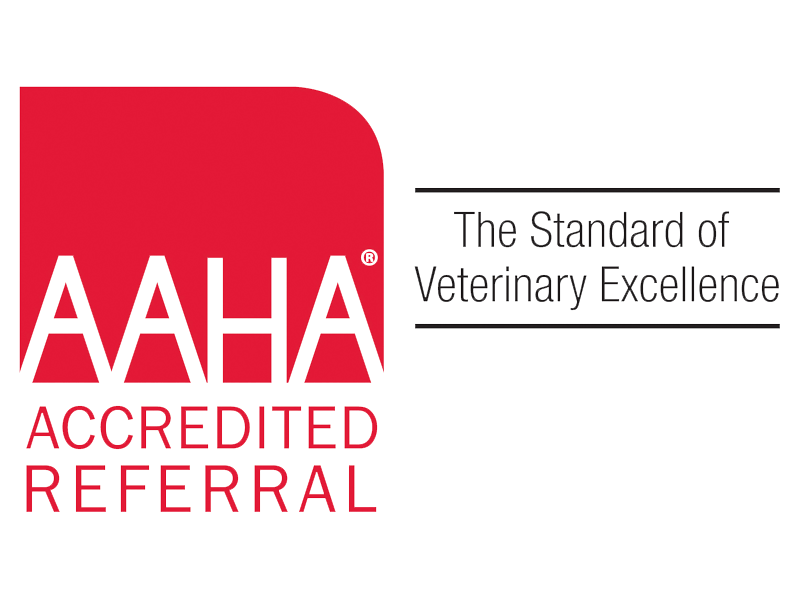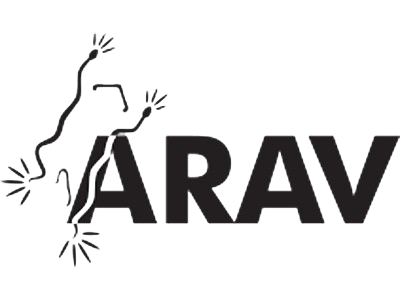 Hairless cats and dogs have not just been subjected to a bad experience with an overzealous groomer. They are born with no hair. Here are is everything you need to know about hairless pets, from history, breeds, health and care.
Hairless cats and dogs have not just been subjected to a bad experience with an overzealous groomer. They are born with no hair. Here are is everything you need to know about hairless pets, from history, breeds, health and care.
History of Hairless Pets
Being hairless started out as genetic defect. Then someone found it a desired trait and decided to breed it. The results for cat breeds include the Sphynx and the Peterbald, while hairless dog breeds include the Peruvian Inca Orchid, the Chinese Crested and the Xoloitzcuintli.
Generally, there are two main reasons why individuals choose to own hairless animals for pets: They want a pet who doesn’t shed, or they’re allergic to animals and hoping that a hairless dog or cat will be hypoallergenic. However, It is debated among experts whether it is the actual hair people are allergic to or the skin scales that are shed. But one thing is certain — hairless breeds are predisposed to more dermatological problems.
Breeds of Hairless Pets
Dogs
Chinese Crested
 Hairless dogs appeared in China as early as the 13th century. Recognized by the American Kennel Club in 1991, Chinese Cresteds come in two varieties: hairless and coated (also known as Powderpuffs). Hairless Chinese Cresteds have a ridge of fur on their head resembling a Mohawk, as well as soft, silky hair on their ears, face, tail, feet and part of their legs. The hair and skin of the hairless version can be any color or combination of colors. This breed is a people-loving pup who’s agile, an excellent swimmer and jumper, and also very intelligent. As a result, these dogs must have their minds kept busy with puzzle toys if you don’t want them to spend their time figuring out how to place orders online for cases of dog cookies.
Hairless dogs appeared in China as early as the 13th century. Recognized by the American Kennel Club in 1991, Chinese Cresteds come in two varieties: hairless and coated (also known as Powderpuffs). Hairless Chinese Cresteds have a ridge of fur on their head resembling a Mohawk, as well as soft, silky hair on their ears, face, tail, feet and part of their legs. The hair and skin of the hairless version can be any color or combination of colors. This breed is a people-loving pup who’s agile, an excellent swimmer and jumper, and also very intelligent. As a result, these dogs must have their minds kept busy with puzzle toys if you don’t want them to spend their time figuring out how to place orders online for cases of dog cookies.
Peruvian Inca Orchid
 Similar to the Chinese Crested, this Andean sighthound comes in hairless and coated varieties. Spanish conquistadors called these dogs perros flora (flower dogs) because they were found living amid orchids in the homes of the Incas. In Quechua, the language of the Incas, their name meant “dog without vestments” — in other words, naked canine. The average hairless Peruvian Inca Orchid is born without fur. However, there is the occasional small thatch of hair atop their head, their toes and the tip of their tail. Peruvian Inca Orchids come in three sizes: small, medium and large. While the majority are black with pink spots, they can also sport such colors as gold, tan, mahogany, chocolate, blue or gray.
Similar to the Chinese Crested, this Andean sighthound comes in hairless and coated varieties. Spanish conquistadors called these dogs perros flora (flower dogs) because they were found living amid orchids in the homes of the Incas. In Quechua, the language of the Incas, their name meant “dog without vestments” — in other words, naked canine. The average hairless Peruvian Inca Orchid is born without fur. However, there is the occasional small thatch of hair atop their head, their toes and the tip of their tail. Peruvian Inca Orchids come in three sizes: small, medium and large. While the majority are black with pink spots, they can also sport such colors as gold, tan, mahogany, chocolate, blue or gray.
Xoloitzcuintli
 Although it appears difficult, this breed’s name is pretty easy to pronounce: show-low-eats-queent-lee. For short, many call this breed “show-low”. Depictions of this breed in Mexico date as far back as pre-Columbian times, so it is considered to be a primitive breed that developed with little human intervention. This clever breed is characterized by its bare-naked body, with large ears that stand erect, satiny skin and a jaunty, low-set tail. They are intelligent, independent dogs who tend to be aloof around strangers, but they are very loving, loyal and protective toward their family members.
Although it appears difficult, this breed’s name is pretty easy to pronounce: show-low-eats-queent-lee. For short, many call this breed “show-low”. Depictions of this breed in Mexico date as far back as pre-Columbian times, so it is considered to be a primitive breed that developed with little human intervention. This clever breed is characterized by its bare-naked body, with large ears that stand erect, satiny skin and a jaunty, low-set tail. They are intelligent, independent dogs who tend to be aloof around strangers, but they are very loving, loyal and protective toward their family members.
Cats
Sphynx
 The best known of the hairless cat breeds is the Sphynx. This cat was developed in the 1970s through crosses between hairless cats and Rex cats. The medium-size breed has a suede-like coat, a wrinkled face and satellite-dish ears that give them the expression of a wise and kindly visitor from outer space. Their skin comes in almost any color or pattern, including solid, pointed, tabby and tortoiseshell. It is important to note that grooming a Sphynx is a labor-intensive project that involves wiping their eyes daily and bathing their oily skin weekly to monthly to prevent clogged pores. This bright and curious feline has a distinct sense of humor and will do just about anything for attention. Expect these cats to bask in the sunniest spots of a room during the day and snuggle under the bed covers at night.
The best known of the hairless cat breeds is the Sphynx. This cat was developed in the 1970s through crosses between hairless cats and Rex cats. The medium-size breed has a suede-like coat, a wrinkled face and satellite-dish ears that give them the expression of a wise and kindly visitor from outer space. Their skin comes in almost any color or pattern, including solid, pointed, tabby and tortoiseshell. It is important to note that grooming a Sphynx is a labor-intensive project that involves wiping their eyes daily and bathing their oily skin weekly to monthly to prevent clogged pores. This bright and curious feline has a distinct sense of humor and will do just about anything for attention. Expect these cats to bask in the sunniest spots of a room during the day and snuggle under the bed covers at night.
Peterbald
 The Peterbald is a rare Russian breed which originated in the city of St. Petersburg as the offspring of a Don Sphynx (also known as a Don Hairless) and an Oriental Shorthair. This breed comes in all colors and patterns recognized by the American Cat Fanciers Association and four coat types: The Ultrabald is born completely hairless, with soft skin that is sticky to the touch. The Chamois, or Flock, also has soft skin, with little to no visible hair (some cats have slightly longer or more dense fur on the legs, tail and face). The Velour variety has soft hair covering his entire body that may be sparse or dense, ranging in length from 1 millimeter to 5 millimeters. The Brush coat is not like any other breed, as some of their coats are fine, with both long and short hairs, while others are heavier, with dense, wiry and irregular texture. Whiskers are always kinky, curly or broken in appearance.
The Peterbald is a rare Russian breed which originated in the city of St. Petersburg as the offspring of a Don Sphynx (also known as a Don Hairless) and an Oriental Shorthair. This breed comes in all colors and patterns recognized by the American Cat Fanciers Association and four coat types: The Ultrabald is born completely hairless, with soft skin that is sticky to the touch. The Chamois, or Flock, also has soft skin, with little to no visible hair (some cats have slightly longer or more dense fur on the legs, tail and face). The Velour variety has soft hair covering his entire body that may be sparse or dense, ranging in length from 1 millimeter to 5 millimeters. The Brush coat is not like any other breed, as some of their coats are fine, with both long and short hairs, while others are heavier, with dense, wiry and irregular texture. Whiskers are always kinky, curly or broken in appearance.
Health Concerns About Hairless Pets
The coat of an animal has many specific functions, including protecting the skin from sunlight, and it regulates the skin’s surface temperature and humidity. As a result, hairless dogs and cats are more prone to sunburns and skin cancer. Also, their skin tends to dry out more because water evaporates faster without hair to lock it in. Skin infections are more frequently seen, especially in hairless cats who tend to get an overgrowth of yeast on their skin and around their nail beds.
For those who own a hairless dog or cat, it is important to use an animal-safe sunscreen if your pet is going to be exposed to sunlight. It is also important to talk to your vet if your hairless pet’s skin appears to be dry or scaly.
There are various topical creams, both prescription and over-the-counter, available that can be used for moisturizing and maintenance. Contact your veterinarian about the right ones for your hairless pet.
All Pets Medical Center is a full-service veterinary clinic specializing in dogs, cats, and exotic pets. Don’t hesitate to contact us for more information on hairless pets with the link below!
















Jessica Trinque liked this on Facebook.